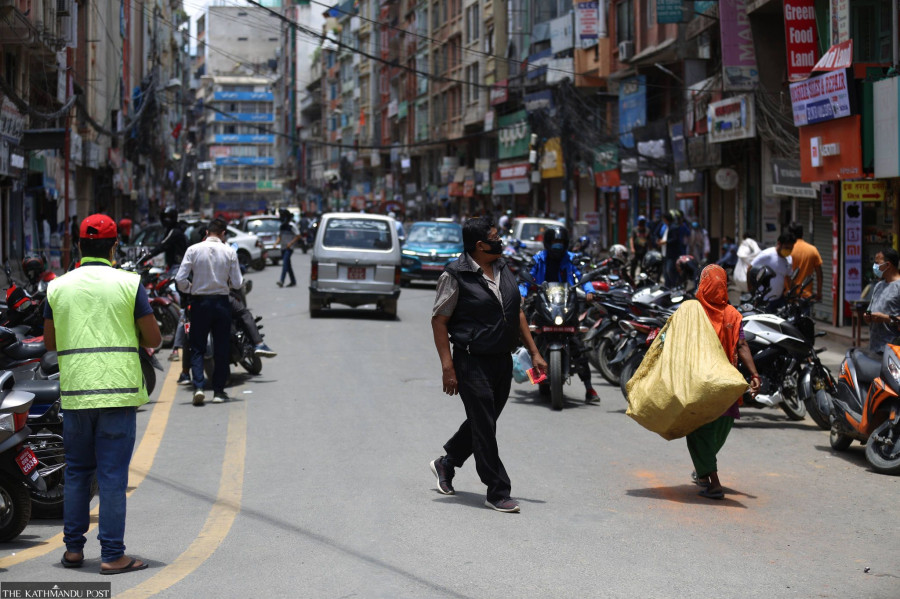Editorial
Traffic nightmare
Authorities ignore the hassles faced by pedestrians instead of seeking a lasting solution.
Times are such that you need to juggle your entry and exit hours if you’re venturing out in your vehicle in Kathmandu. Rush hours do not seem to exist anymore. It’s Dashain that sends people into a fit of frenzy. It is not that it isn’t expected, but it’s the same story that tends to repeat itself. The traffic bottleneck can stretch the backlog of vehicles far beyond the view of one’s rearview mirror. Crowds of people trying to wriggle past the oncoming onslaught of vehicles, people and animals, in addition to broken pathways and protruding manholes, creates nothing less than a hazardous situation for the happy shopper.
For starters, we have far more vehicles plying the streets than the existing infrastructure can support. It will baffle even the most unsophisticated person who fails to get their head around the basics of economics. With increasing taxes on vehicles now hovering about 200 percent, demand for vehicles sees no sign of weakening. In fact, the opposite is true; the surge in demand has been increasing at an unprecedented rate over the years with a slight blip caused by the pandemic.
It is one thing to drive around, but finding a parking spot near where one intends to be is a nightmare. And although the parking rates are eye-watering, there is no shortage of people who would be more than happy to part with their money for the convenience of a suitable parking spot. This acute shortage has caused the existing pavement left to be used by vehicles. The authorities more often than not turn a blind eye to the hassles borne by pedestrians instead of consolidating efforts to seek a lasting solution to a rapidly expanding issue.
The traffic problem is also exacerbated by a lack of traffic and civic sense. Take, for example, the relevance of a zebra, which seems to be lost to the average commuter. The mere presence of white stripes on black tar appears to confuse the daylights out of the driver, who more than often refuses to stop for a pedestrian walking on it. It needs to be reiterated that zebra crossings are not fancy artwork to camouflage any deficiencies such as potholes; it serves a benign purpose to allow people to cross roads safely. On the other hand, jaywalkers need to be reminded that there is no safer way than to use designated points to cross roads instead of following intuitive acts of madness.
For all the loose talk on traffic madness, there needs to be a concerted effort by the authorities to make sure that the streets run smoothly and safely. Investment in infrastructure is of prime importance, but nothing should go amiss in the education and awareness of improving traffic sense that seems to blight the vision of motorists and non-motorists alike. After all, awareness of the rules will be the only resort to help triumph over this increasing insanity of traffic chaos.




 12.12°C Kathmandu
12.12°C Kathmandu














